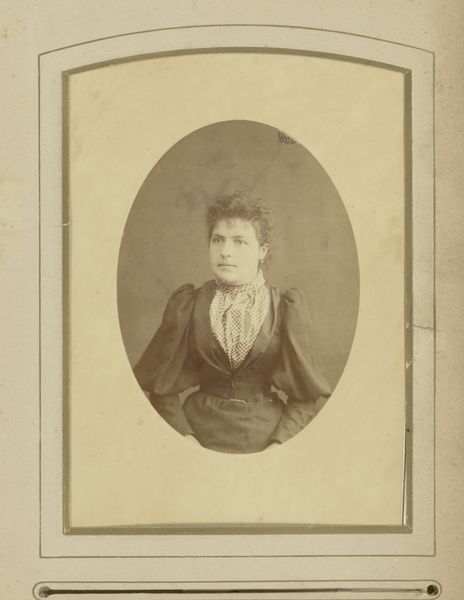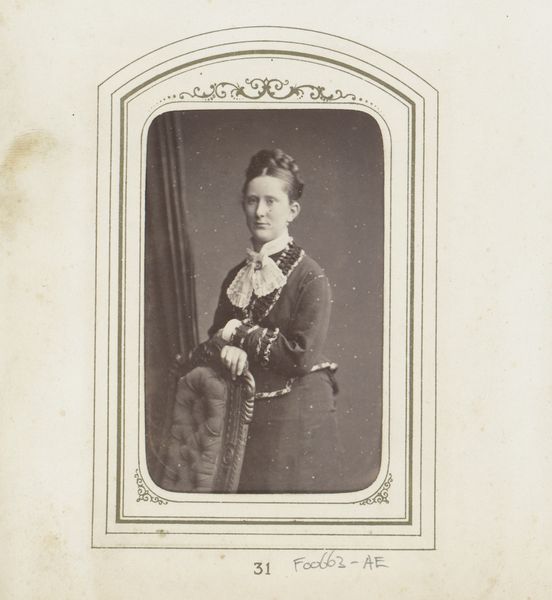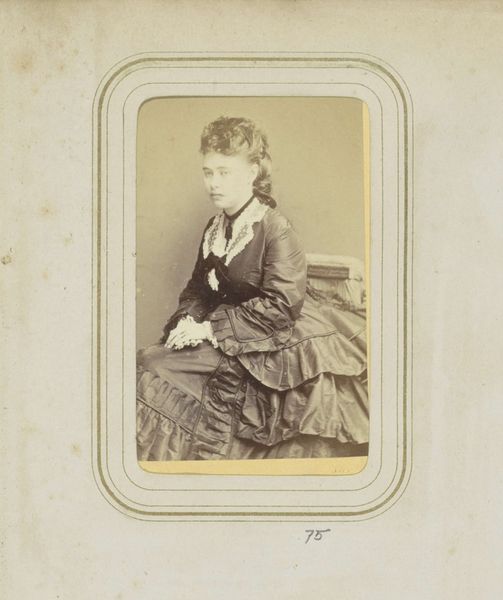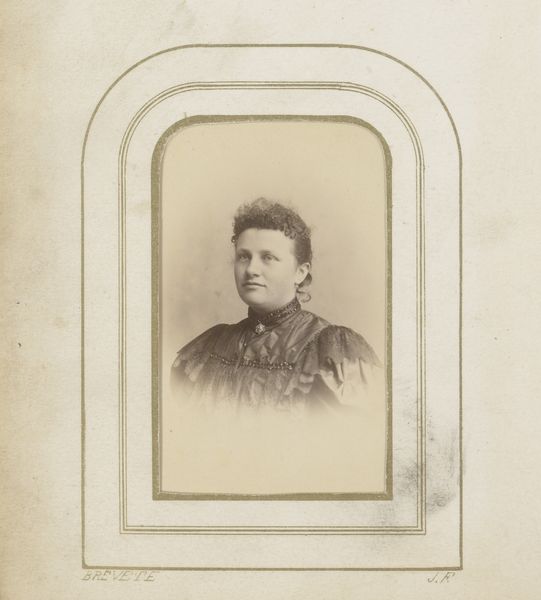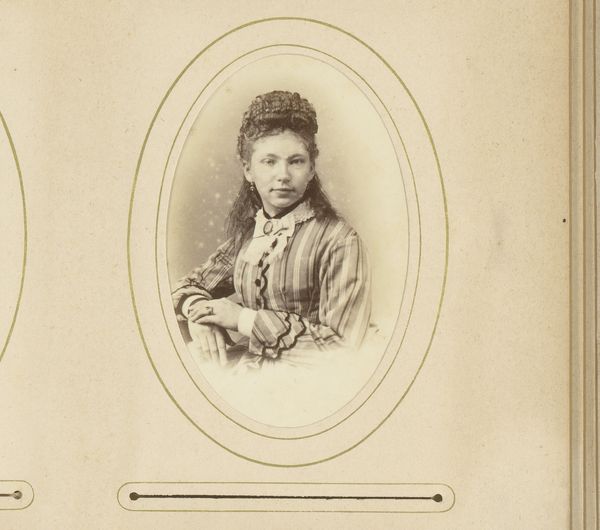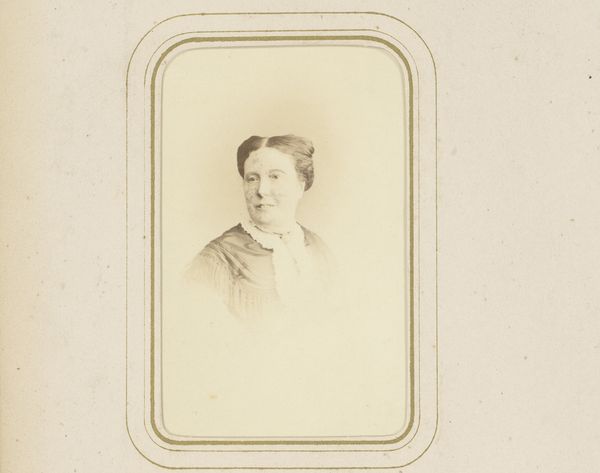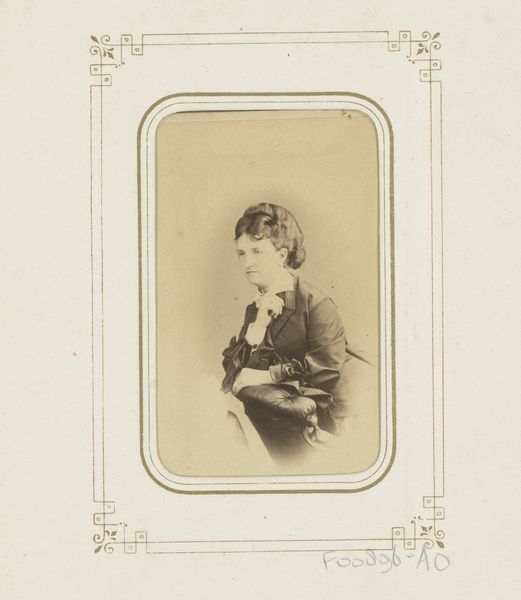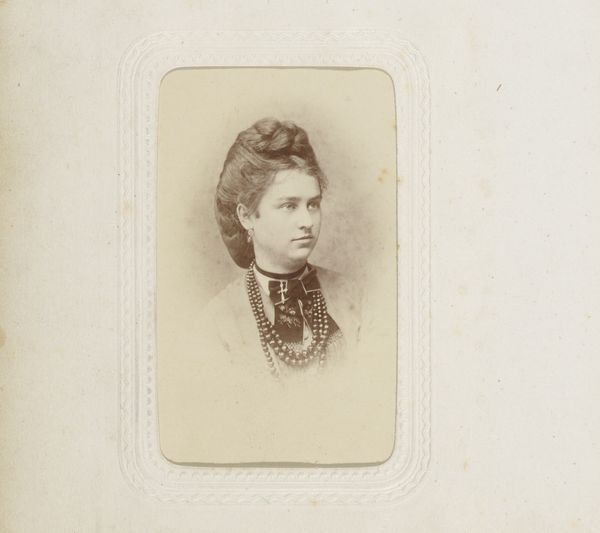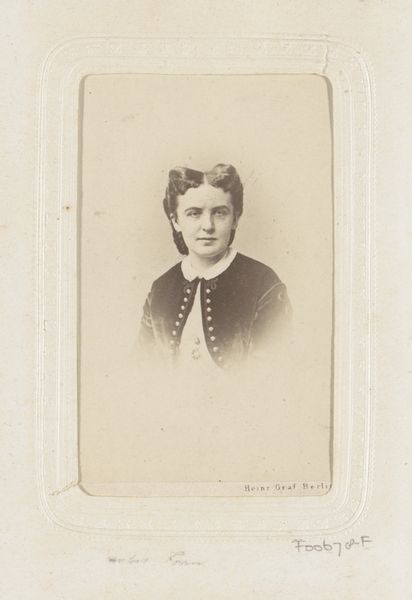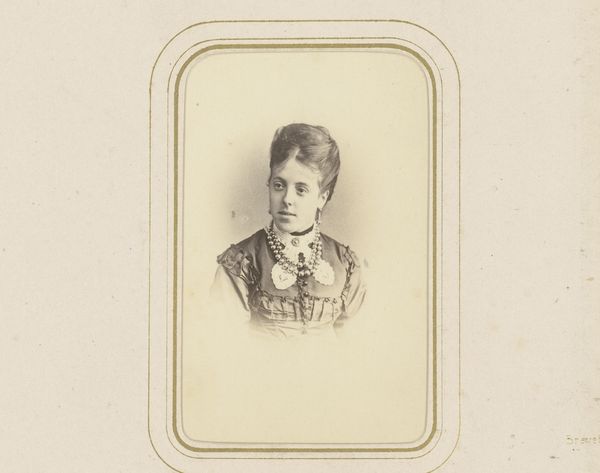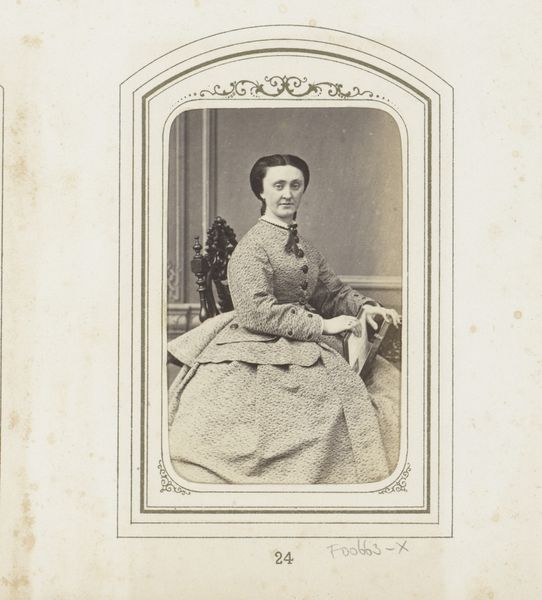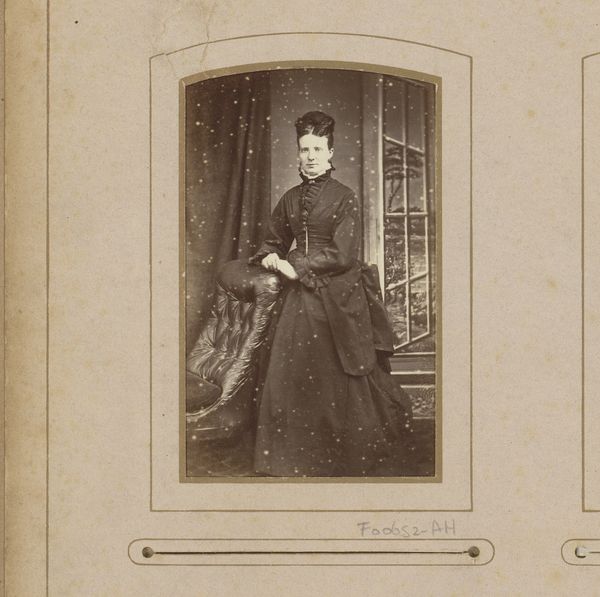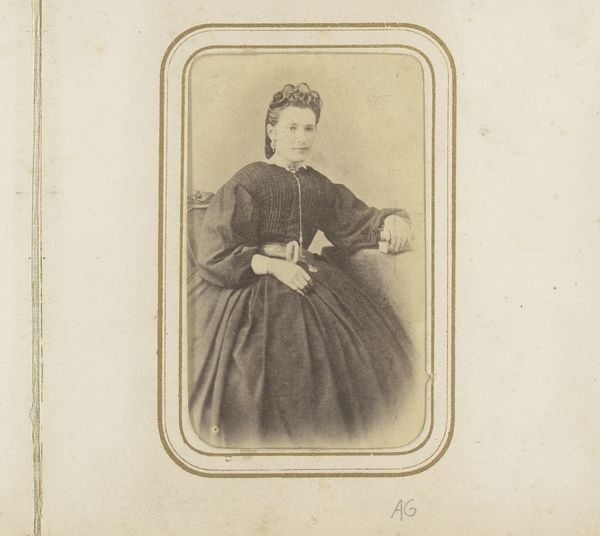
photography, gelatin-silver-print
#
portrait
#
16_19th-century
#
photography
#
historical photography
#
gelatin-silver-print
#
19th century
Dimensions: height 85 mm, width 53 mm
Copyright: Rijks Museum: Open Domain
Curator: Look at this wonderful, historical artifact. It's a photograph, a gelatin silver print titled "Portret van een zittende vrouw," or "Portrait of a Seated Woman," created between 1867 and 1872 by Johannes Franciscus Lomans. Editor: My initial impression is of formality, almost a staged dignity. There’s a real gravity in her pose, wouldn’t you agree? The sepia tones deepen that sense. Curator: Absolutely. Photography at that time was a weighty procedure; this was a performance of social status. Think about the socio-economic implications; photographs were expensive, time-consuming... who were they for? Who were they excluding? Editor: It's like a visual encapsulation of Victorian ideals, a certain reserve but also a clear indication of societal expectations of women. I keep looking at her dress; there is a clear symbolism of wealth and status communicated through this detailed construction. It's all about constructing the female subject to portray the perfect figure of 19th century ideals. Curator: And observe the framing itself—a very popular presentation method. That elaborate border creates a little proscenium stage, emphasizing her role as a subject on display. The visual symbols create their meaning through framing techniques like this; the presentation becomes inseparable from what we see in the picture. Editor: Do you get the sense of controlled expectation from her eyes? They tell me a silent story about her social environment, her place in the world. I feel a mixture of sadness and quiet determination there, what about you? Curator: Yes, indeed! It’s this psychological weight carried within her gaze which draws me to it. Photography, despite its attempts at pure representation, is always a dance between subject and the cultural forces that both capture them and seek to define them. I leave this portrait now pondering over whose voice ultimately spoke. Editor: Indeed. It's a stark reminder of the cultural structures that shape us, isn't it? Even now, we’re left analyzing these layers of social encoding over a century later.
Comments
No comments
Be the first to comment and join the conversation on the ultimate creative platform.
